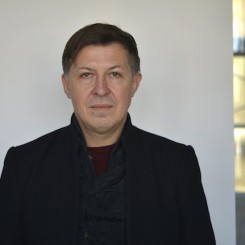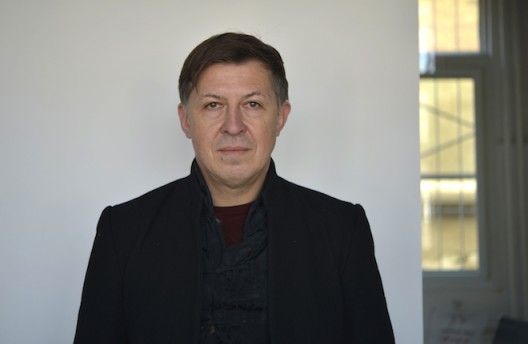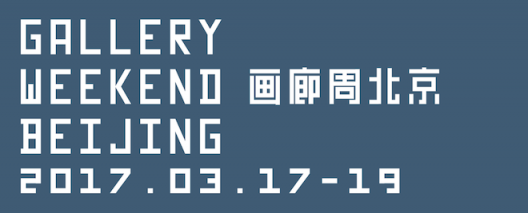Ran Dian talks to Thomas Eller, the founder of Beijing Gallery Weekend (March 17–19, 2017).
What is a “Gallery Weekend”? Or maybe: what is this Berlin Gallery Weekend model? And why is this more interesting than an art fair? (For Berlin and for Beijing?)
Thomas Eller: Such a simple question, and yet so many different aspects rolled up together. Start with the most obvious answer: Beijing has everything—a lot of very good artists, very good galleries, and some good museums! What it doesn’t have is a reason to go there. This became painfully clear last summer when everybody in the Beijing art world started staring at Shanghai, which was to have two important art fairs and a biennial in November. So in discussions with many galleries in Beijing, the idea came to create a gallery weekend for Beijing. Of course, it helped I had lived in Berlin, when the galleries there had first started this format, and since I was then head of artnet in Germany, I collaborated with them for a few years.
So the purpose of Gallery Weekend Beijing is to give collectors and art experts a reason to come to Beijing at one particular time, when artists and galleries in Beijing put up their best shows in the year. Being as it is on the weekend before Art Basel Hong Kong, we also provide an opportunity for a global audience to combine the two in a convenient travel itinerary.
But back to your question: what is a gallery weekend?! An attempt to get collectors back into the galleries to look at art. With the ever-busier schedule of the international art world, there is a growing disconnect between artistic practice and the distribution of art—which I feel is a bit dangerous. Just look at the ongoing attack on the “brick-and-mortar” galleries from a purely economic perspective….
How are the galleries selected? How spread out will it be?
Thomas Eller: We only wanted the best and not too many! It’s important to really focus at the beginning and create some energy! To be effective, we wanted to work with a few galleries and provide the best service possible! I guess we also need some room to grow over the next few years. Since you mentioned Berlin, they also started with a dozen or so galleries and now there are about 50.
In terms of navigating the gallery weekend: we are only present in the 798 and Caochangdi art districts. There are a few more very good galleries outside of this area that we will want to work with in the future. But in the beginning, I think it is good to keep things focused.
So when you arrive, you will see our people (with “问我” signs) at many of the gates and important intersections to the art districts. They will be assisting you to find all the participating galleries and museums. We will also have a shuttle service between 798 and Caochangdi for the three days. On Sunday, we will also have a few buses from 798 to Sishang Museum. Our VIPs will also be given a service phone number they can call—if they get lost or need help from an interpreter in a taxi.
We try to make this a really pleasant experience for our guests. Hopefully they don’t even notice it too much—we want them to pay attention to the art in the galleries. We want to support the gallery system for one reason: If you look at art history, in modern times, behind every artist who made it into the history books there has always been one gallery that worked for them for decades. It might sound strange coming from someone who is also an artist, but I really believe that if Chinese artists want to compete with Western artists, they need to find strong supporters that help build their careers. This is, by the way, also attractive for collectors. If I were a major collector I would look for serious committed galleries that support their artists long term. That is not only how you secure your investment—it is also meaningful for the development of art!
Art fairs obviously connect people in one place—not just galleries and collectors, but galleries with other galleries, artists with other artists or gallerists, writers or curators, or whatever combination. So what is better in a gallery weekend model, vis-à-vis an art fair? Do you think gallery weekends offer local specificity—in a way that art fairs often don’t have (in the way that the cities successful with Art Basel are kind of like duty-free, aerotropolises)?
Thomas Eller: Art fairs were invented and are successful for a reason. Market overview and explicit sales opportunities have definitely strengthened the art market as a whole. I think I made an observation though. Art fairs seem to be successful in places that are also major financial markets: Basel, London, New York, Hong Kong, Shanghai. Berlin never had a successful art fair. Some places just don’t have the right energy for that. The other observation is places like Basel or London didn’t even have a lot of strong contemporary art galleries when they started the fair. Strong galleries, however, rely on strong artists who live very close by. That’s what made New York and Cologne strong initially, before everything in Germany shifted to Berlin. Berlin is a place for artists, as Beijing is, in a way. I also think artists who live and produce close to power are more interesting that those who produce in a demimonde of glitz and commerce.
Having said that, this might be one of the explanations for the slow decline of art fairs in Beijing. So the idea for Gallery Weekend is NOT to eventually branch out and create another fair. I don’t think Beijing—or the art world—needs that, not to mention the obvious disadvantages of an art fair in a regularly taxed zone in the PRC.
But there is a whole other aspect, which is the danger of the disconnect between artistic practice and the market. When working in their studios, artists have the next exhibition in mind, not so much the next fair or auction. A solo exhibition is the emotional highlight in an artist’s production cycle every other year or so. That’s what they work for and, in a way, no artwork is ever finished until it has been exhibited for the first time. Only when the exhibition is installed, the lights are set, and the people come in, is the work finished. In the olden days, this was called “vernissage”. Artists invited people to celebrate the moment—when the last protective layer of a painting, the varnish (le vernis), was put on the painting, and it could no longer be altered (hence the name). It turned out this was also an excellent selling opportunity, because it was an emotionally charged moment, not only for the artist.
Our openings today still carry that emotional charge. For serious collectors, the exhibition is also a chance to look deeper into the complexities of an artist’s oeuvre. How much can you really understand about an artist if you see an isolated work at an art fair or an auction?! If you don’t know the artist really well beforehand, it is difficult to make decisions about the quality of a particular artwork. In an exhibition, however, all that reveals itself rather quickly. A well-crafted exhibition also carries a lot of cues about an artist’s intelligence by the way of presentation.
If I were to use a metaphor, the exhibition is an artist’s long record album vs a single release for immediate download. There is enough of an artist inside me to understand the absolute importance of an exhibition in the creative process. Plus young artists could never be “discovered” if nobody gave them an exhibition. So in other words: The Gallery Weekend Beijing is also geared to strengthen the gallery model as an absolutely important and integral part in the production of art.
In a way, contemporary art in China is always importing a “European” or “American” typology into China. And on the other hand, there’s adaptation and resistance locally. How much does Gallery Weekend Beijing connect different worlds (not just East-West), if we even generalize about differences?
Thomas Eller: Well, the longer I live in Beijing, the less I can speak about East-West issues—as it should be. One meets a lot of very different personalities, which in the end are more interesting than generalizations. Since you put me on the spot, I guess one of the big differences I can see is that almost ironically in a younger generation of artists, the focus is more on expressing their individuality and their belief than in the West, where artists forced by the powers of what Dave Hickey famously called the “therapeutic institution”—the curatorial demimonde of the art market—to legitimize their existence by making art ABOUT something of assumed political or societal importance. Whereas in Beijing you go to an artist’s studio and they are actually talking about their dreams! In Berlin, that would be a deal breaker for the most part. Talk about dreams and no curator would take you seriously anymore. But why not? I find this actually quite liberating.
Where I come from, I think there is hardly any innovation in the West. I feel we have collectively entered a plateau on which the artistic rhetoric developed in the 60s and 70s (50 years ago!) are now being remixed over and over again. Really starting in the 90s when artists began revisiting art practices of their parents’ generation, adopting them to be praised by them. I will never forget the moment when, after a conference of sorts in a gallery in NYC about institutional critique, Benjamin Buchloh put his arm around Andrea Fraser in an ultimately patronizing gesture and declared that she is the most important artist of our times.
I then knew there was something wrong—what happens at a time when institutional critique has become the defining institution? What happens when critique petrifies into criticality? When being progressive becomes a tradition? There is a distinct air of conservatism in all these self-proclaimed progressives.
I don’t see any progress in the so-called West however. Everybody is banging their heads against the self-imposed limits of what you can say in the art world.
In China, as somebody new to here, I see a lot of phenomena that at first I can’t understand—which after some inquiry turn out to be different concepts of relating to the world, constituting the self, and reacting to outside pressures. I find this quite fascinating. Those things are mostly found in the cracks, between the lines and are not fully assertive as a lot of art in the West—which often has a single idea and tries to force an argument from it, or at least create a strong appearance.



